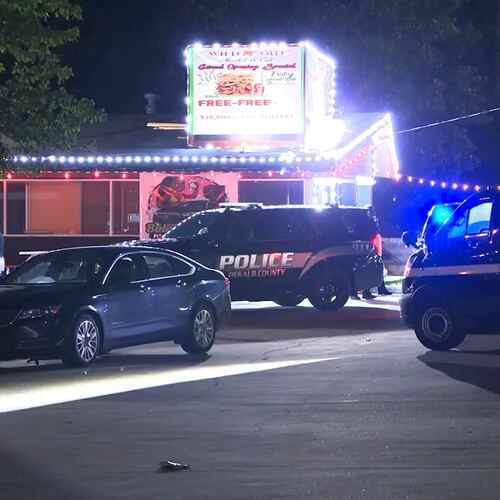The decline of Atlanta’s Whittaker School started before it even opened, a campus built in 1959 for a historically black neighborhood already doomed to obsolescence.
Yet the school survives, however tattered, boarded-up and graffiti-laden off Huff Road in the city’s now fashionable Westside, Atlanta’s original industrial corridor. It is for sale for the second time in three years, a victim of circumstance now much as it was back then.
“The market’s terrible,” said Tim Holdroyd, a longtime Midtown real estate broker whose firm, City Realty Advisors, is handling the sale. “But it’s a great location.”
The school’s 1.62 acres are just blocks from Bacchanalia restaurant, fabric marts and new condominiums, as well as a stone’s throw from the Atlanta Water Works at Howell Mill Road. Of course, none of that existed in the early 1890s, when businesses and houses began to cluster around several rail spurs built off Seaboard Railroad’s main line.
Blandtown, as the neighborhood was called, got its name from Felix Bland. A former slave, Bland after the Civil War took ownership of the land willed to him by his former owner, according to the memoir, “My 80 Years in Atlanta,” by Sarah Huff, who was 8 years old when Sherman shelled the city in 1864 and whose family gave Huff Road its name.
Bland quickly lost the land for not paying taxes. A developer took title and began carving out a residential area. Then came the rail spurs, around which a mill, a fertilizer factory and a stockyard opened, according to a book by Georgia Tech professor Larry Keating called “Race, Class and the Atlanta Housing Market.”
With those businesses came jobs. And with jobs came a close-knit, predominantly black community that supported four churches, a public health clinic and more. Blandtown thrived until the early 1950s, Keating writes.
The fast-growing city of Atlanta annexed Blandtown in 1952 and in 1956 rezoned it from residential to heavy industrial. Georgia’s highway department soon classified Blandtown’s main streets as truck routes, sealing its fate, according to Keating. It would be a neighborhood no more.
Railroads moved swiftly to expand in the area. Two of today’s biggest freight carriers, Norfolk Southern and CSX, opened yards there in 1957. That same year, the city school system began a $17.2 million bond program to build 22 new buildings. One of them was Whittaker, which opened as an elementary school two years later. According to school board minutes from Aug. 11, 1958, the “Blantown” community requested that it be named for John P. Whittaker, an educator and longtime registrar of Atlanta University.
The Whittaker School campus boasts a surprisingly modern architectural style, with hexagonal classroom “pods” built of concrete with a red-brick exterior. Records from the school system’s archives do not name the architect. According to Holdroyd, there are no load-bearing walls in the entire building.
“It’s fascinating,” said Marifred Cilella, head of school for the private Howard School, which in January 2007 moved to a new campus next door to Whittaker. “Obviously, it’s a product of its time, [built] to support pedagogy by designing the classrooms a certain way.”
But Blandtown was already lost, dwindling from more than 300 households to about 50 within two decades. Whittaker closed in the early 1960s, “a victim of a population shift when business moved in and residents began moving out,” according to The Atlanta Constitution in 1969.
By then, the city had made the school home to a program for children with learning disabilities. But that, too, didn’t last long. The campus closed again in 1974. Four years later, the system began leasing the building to an outside education agency, although the building has been abandoned now for more than a decade.
A developer, Robert L. Silverman, bought the school in 2006. At the time, it seemed a good omen: Silverman, who has a passion for historical buildings, had redeveloped the old Bass High School in Little Five Points. He paid $3.18 million, according to Fulton County property records, and “was planning to use it as his own offices,” Holdroyd said. Then the economy soured. Those plans fell through.
Now back on the market, Whittaker’s selling price has fallen from $2.8 million to $1.5 million. Holdroyd said at least 25 groups have looked at it over the past two years, including the Howard School, which was in talks to buy but backed out because of a “business decision,” the school’s Cilella said.
The building needs a complete gutting, which Holdroyd estimates could cost as much as $700,000; one construction quote in 2007 pegged it at $1.2 million. The area around it is redeveloping, but Whittaker still waits.
“It’s a matter of the times and a matter of the cost,” Holdroyd said. “It is unique and, as such, limits the scope of buyers.”
About the Author
The Latest
Featured

